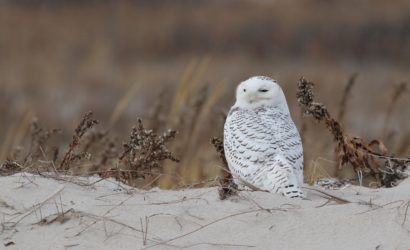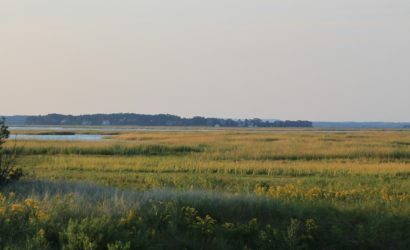We have much more to do and your continued support is needed now more than ever.
With New Leaders, New Chance to Confront Climate Challenges
Our climate is changing faster than America is moving to solve it. The new leaders we’ve just elected must face that fact. Fortunately, there are solutions available, not only in terms of cutting climate pollution, but in helping our communities adapt to the changes we can’t avoid.
A project in Houston called Exploration Green is a best-in-class example of using natural infrastructure to protect vulnerable communities from increasingly severe storms. This multi-stage project is converting a former golf course into a 200-acre urban wetland that provides flood protection, wildlife habitat, and trails for recreation and commuting. During Hurricane Harvey, the project’s first phase demonstrated its value, acting as a sponge to protect residents and their homes from that storm’s unprecedented flooding.
At last week’s 2018 National Disaster Resilience Conference in Clearwater Beach, hosted by the Federal Alliance for Safe Homes, I joined with Allied World Assurance in honoring the project with the NWF/Allied World Resilience Award. Exploration Green is a national model for disaster risk reduction and we hope to see other communities follow its lead.
Exploration Green provides not just a model of smart policy, but of pragmatic politics. It was planned brilliantly around the concept of harnessing nature’s defenses by retrofitting existing open space, and ably carried out by engaging with the surrounding community and applying an innovative financing mechanism.
We can no longer afford business as usual as we face increasingly extreme weather. Scientists are telling us that climate change is fueling more intense storms, rising sea levels, and more frequent and severe flooding. According to NOAA, 2018 is on pace to join the five hottest years on record – all of which have come in the last five years. Climate scientists are now directly connecting the dots between our disrupted atmosphere and unprecedented monster storms like Hurricanes Florence, Harvey and Michael.

Unfortunately, as we look around the country, we’re seeing climate change worsen disasters faster that we’re seeing climate resilience projects like this get across the finish line. Disaster recovery planning is no longer enough. It’s critical for government, communities, businesses and insurers to learn how natural systems can protect communities from disasters and prioritize using these systems to reduce risks before disasters strike.
The National Wildlife Federation and Allied World Assurance have been partners in raising awareness of the role nature-based approaches can play in protecting our communities from worsening hazards, recently issuing our Natural Defenses in Action report and recommendations.
Among the steps communities can take to use natural defenses to protect against disasters:
- Invest in living shorelines, wetlands restoration, functional floodplains, and proactive forest management that provide long-term gains and protections for both wildlife and human communities. A great local example is the McKay Bay Oyster Project, creating 16 acres of new oyster reefs to improve water quality and create fish habitat while reducing storm surge.
- Adopt policies that protect and restore healthy rivers, wetlands, and other natural ecosystems to maximize flood, erosion, drought and wildfire protection.

According to the National Park Service, “Marsh grasses provide several ‘ecological services’ including carbon sequestration, improved water quality, wave attenuation as well as increase biodiversity of local species by providing critical habitat.” Photo: NPS. - Encourage new or reconstructed levees to be set back from the water’s edge to improve floodplain function.
- Support conservation programs that protect and/or acquire environmentally sensitive natural systems and open space. Robinson Preserve, the innovative conservation area at the junction of Tampa Bay and Sarasota Bay, shows how beneficial these types of projects can be.
- Minimize incentives to develop high-risk areas like active floodplains or barrier islands by reforming insurance programs at the state and federal level.
These policy reforms, which should enjoy bipartisan support, can simultaneously reduce risks from extreme storms and floods, reduce exposure for taxpayers, and expand private market opportunities — all in ways that enhance critical fish and wildlife habitat and other natural resources. In Tampa, we’ve seen how improving water quality and seagrass coverage benefits the economy and our way of life.

But we need to more, much more, to get ready for a warming world. By investing in protective natural systems that work with nature rather than against it, we can reduce risks before disasters strike our communities.
Collin O’Mara is president and chief executive officer of the National Wildlife Federation.






















